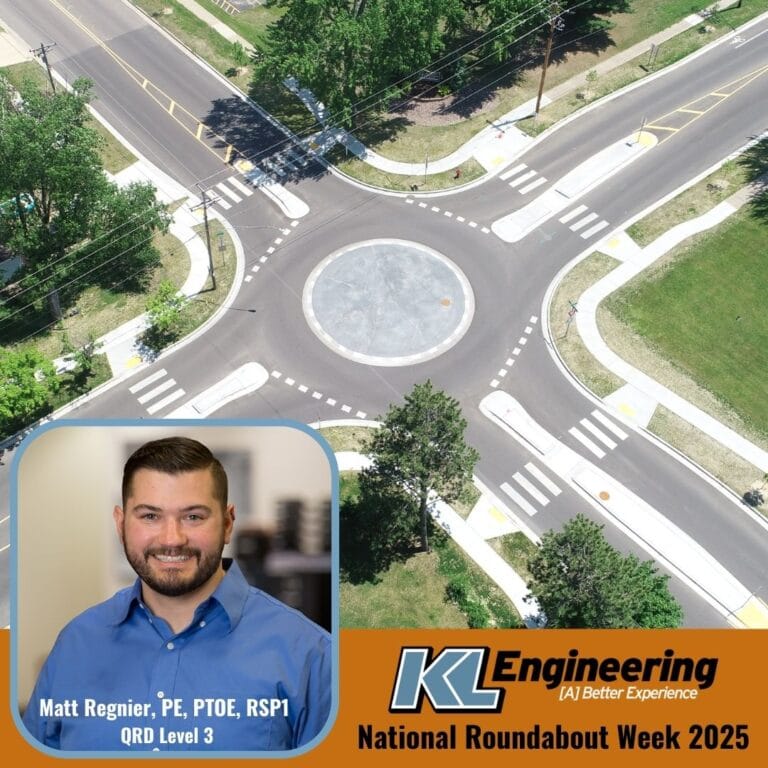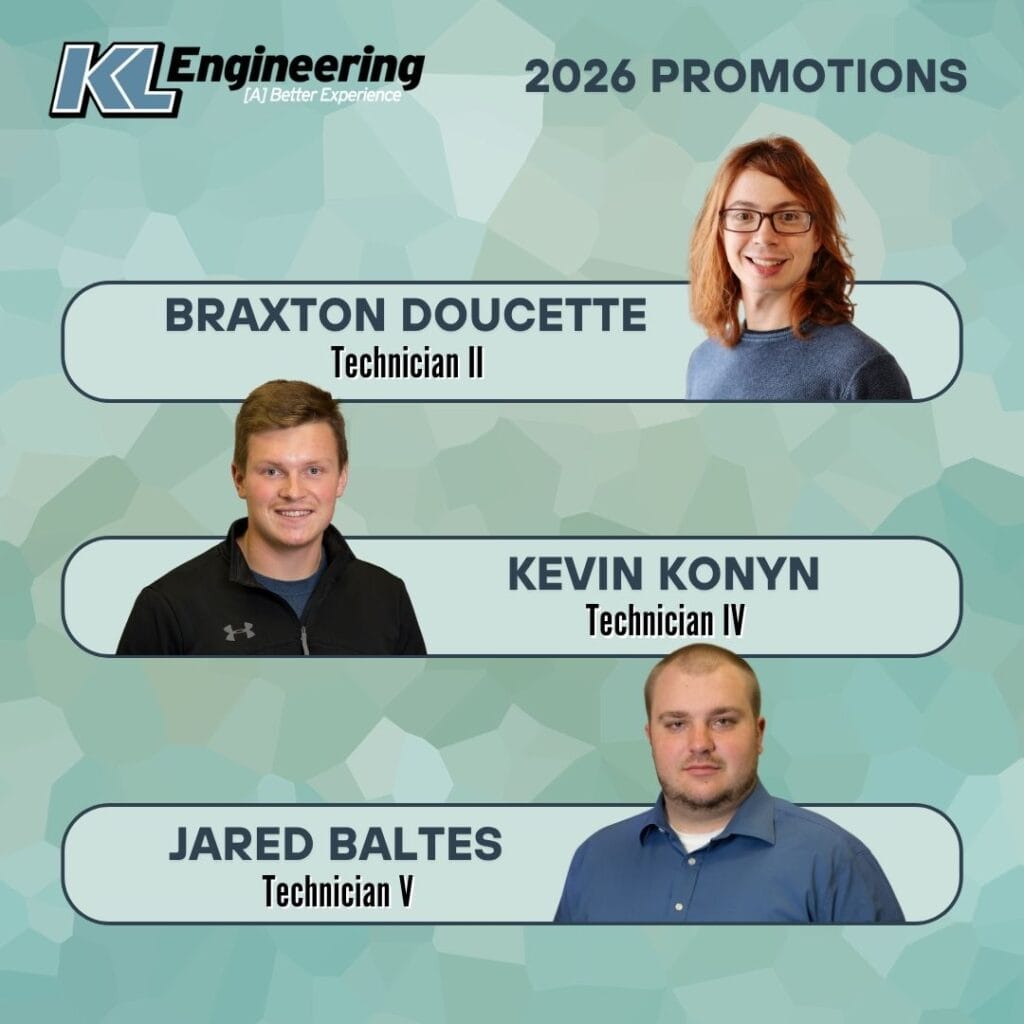In honor of National Roundabout Week, we asked Matt Regnier to share his insights as one of KL’s experts on roundabout design. With years of experience and a passion for practical, people-focused solutions, Matt highlights why mini and compact roundabouts are gaining traction across Wisconsin. Read his article, “Small but Mighty: Why Mini and Compact Roundabouts Could Be Your Community’s Next Big Win,” below, which explores how these scaled-down designs offer big benefits for safety, flow, and community character.
Small but Mighty: Why Mini and Compact Roundabouts Could Be Your Community’s Next Big Win
When most people hear “roundabout,” they picture a sprawling circle at a highway interchange. But not all roundabouts are built for big roads. Their smaller cousins—compact and mini roundabouts—are designed for lower-speed community streets. They fit neatly into tight spaces, keep traffic moving smoothly, and often cost less than other alternatives.
Built for the Right Speed
Compact and mini roundabouts shine where posted speed limits are modest—typically 35 miles per hour or less. On streets where people are already moving slower, these designs feel natural and intuitive. Drivers enter and exit at comfortable speeds, pedestrians cross shorter distances, and bicyclists feel less “pressure” than when moving with fast-moving traffic. According to the National Cooperative Highway Research Program (NCHRP) Report 1043, these smaller designs are particularly effective in neighborhood settings, near schools, parks, and local businesses—places where community character matters as much as capacity.
A Balance of Safety and Flow
Four-way stops are certainly reliable for safety, but they often frustrate drivers and limit how much traffic an intersection can handle. Compact and mini roundabouts offer a strong middle ground: they keep speeds low, support safe travel for all users, and handle more vehicles with less delay. The result is smoother operations without sacrificing the calm, predictable environment communities want.
Economical by Design
Compared to traffic signals, mini roundabouts are often the more economical choice. Installing and maintaining a signal can cost hundreds of thousands of dollars over its life cycle after including electricity, equipment upkeep, and periodic upgrades. A compact roundabout, by contrast, requires no power, little maintenance, and can often be built within the footprint of the existing intersection. The Wisconsin Department of Transportation (WisDOT) Facilities Development Manual, Chapter 11-26 underscores these benefits, highlighting mini and compact roundabouts as cost-effective options that still meet state standards.
Friendly for People, Not Just Cars
Because speeds are lower and crossing distances are shorter, compact and mini roundabouts make life easier for pedestrians and bicyclists. Features like refuge islands let people cross one direction of traffic at a time, improving comfort and confidence for everyone on foot or wheels.
The Bottom Line
Compact and mini roundabouts are about right-sizing intersections for local streets where speeds are low, safety is critical, and community connections matter. Backed by NCHRP Report 1043 and the WisDOT Facilities Development Manual, Chapter 11-26, they’re a smart, people-friendly upgrade that helps neighborhoods move better, together. The KL Engineering roundabout team has designed several compact and mini roundabouts across Wisconsin, and we would look forward to working with you on finding effective solutions for your problem intersections.



